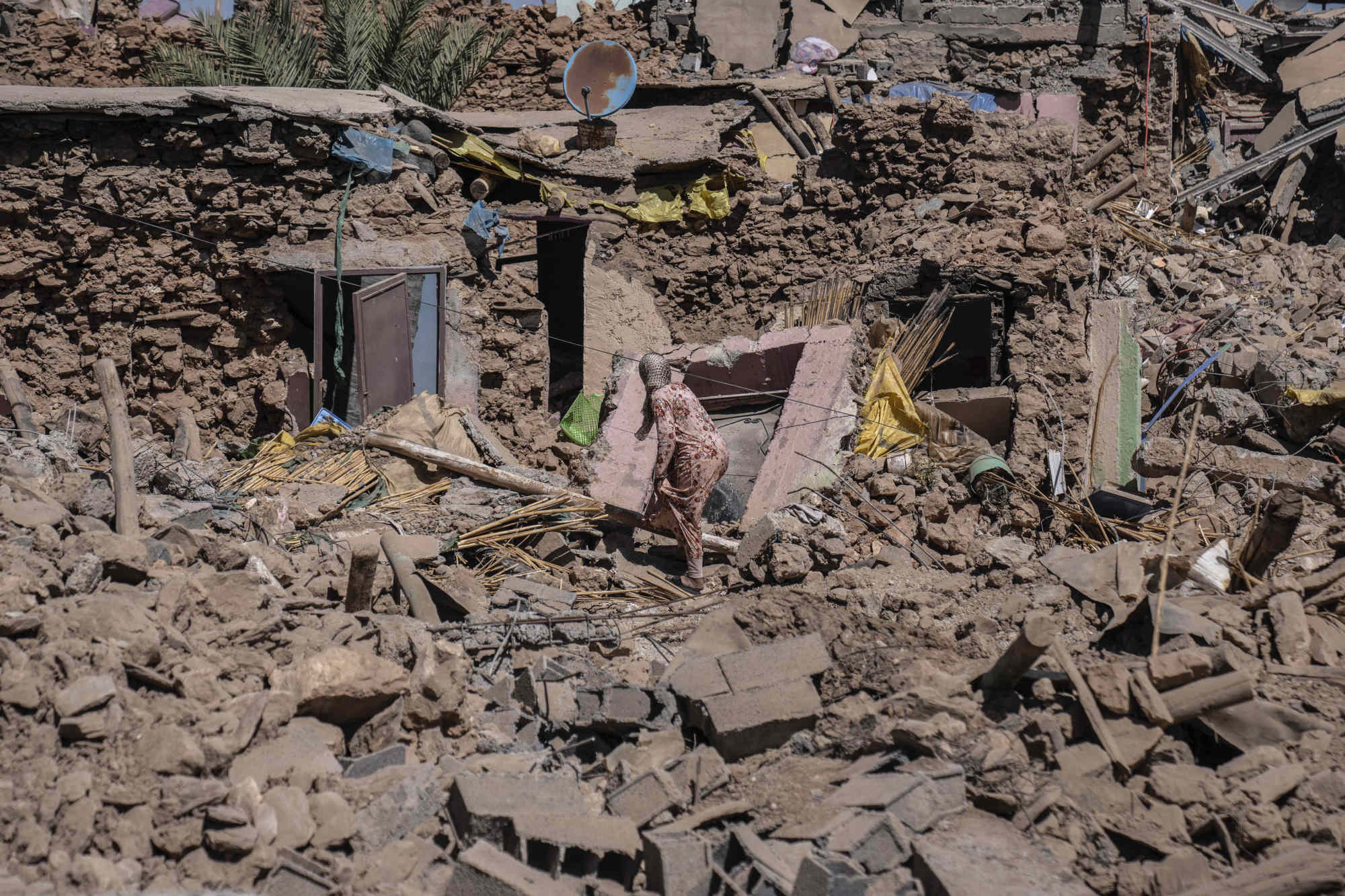Morocco’s mud brick housing makes search for earthquake survivors harder

[ad_1]
Rescuers digging through the rubble after Morocco’s deadly earthquake warned that the traditional mud brick, stone and rough wood housing ubiquitous in the High Atlas mountains reduced the chances of finding survivors.
“It’s difficult to pull people out alive because most of the walls and ceilings turned to earthen rubble when they fell, burying whoever was inside without leaving air spaces,” a military rescuer, asking not to be named because of army rules against speaking to media, said at an army centre south of the historic city of Marrakech not far from the quake epicentre.
State TV reported late on Monday that the death toll from Morocco’s most powerful earthquake since at least 1900 had risen to 2,862, with 2,562 people injured. Many are still missing.
The traditional homes, sometimes hundreds of years old, sometimes built more recently, have long been a popular sight for tourists travelling to the mountain from Marrakech.

They are often built by the families themselves to a traditional pattern, without any architect’s help and with extensions added when they can.
With no major earthquakes for a long time, few people would have thought to consider the risk of a tremor. But structures crumbled easily in mounds of debris when the quake struck late on Friday.
‘Supporting the Moroccans’: tourists staying in quake-damaged Marrakech
‘Supporting the Moroccans’: tourists staying in quake-damaged Marrakech
“The level of destruction is … absolute,” Antonio Nogales, head of Spain’s United Firefighters Without Borders NGO said, speaking from Amizmiz, south of Marrakech, which was hard hit by the earthquake.
“The chances of survival are reduced” without the pockets of air that steel-and-concrete buildings can provide if they collapse, he said, while stressing that rescuers had not lost all hope.
“We never give up, I’m sure that in the coming days there will be some rescues. We think that there may still be people in the collapsed structures, that there may have been pockets of air.”
Even concrete homes or buildings often lack anti-seismic design, experts said, leaving survivors and rescuers to sift through mounds of rubble where homes once stood.

“When you just have the gravity load work, it’s fine, but with the pressure of an earthquake they can crumble basically like mud and dirt,” said Mo Ehsani, professor emeritus of civil engineering at the University of Arizona.
Many survivors across the area have spent three nights outside, sometimes in tents, their homes destroyed or rendered unsafe.
With much of the quake zone in remote areas, the full impact has yet to emerge.
“The big government decision is really around making sure you use modern construction forms in any rebuilding. Rebuilding in this mud brick form is just going to create the next disaster in 20 or 30 years time,” said Colin Taylor, emeritus professor of earthquake engineering at the University of Bristol.
“In countries like Morocco, you’ve got this major problem of having a huge housing stock, which may date back hundreds of years, and repairing or strengthening that housing stock is difficult, technically, and also very expensive.”
[ad_2]
Source link





